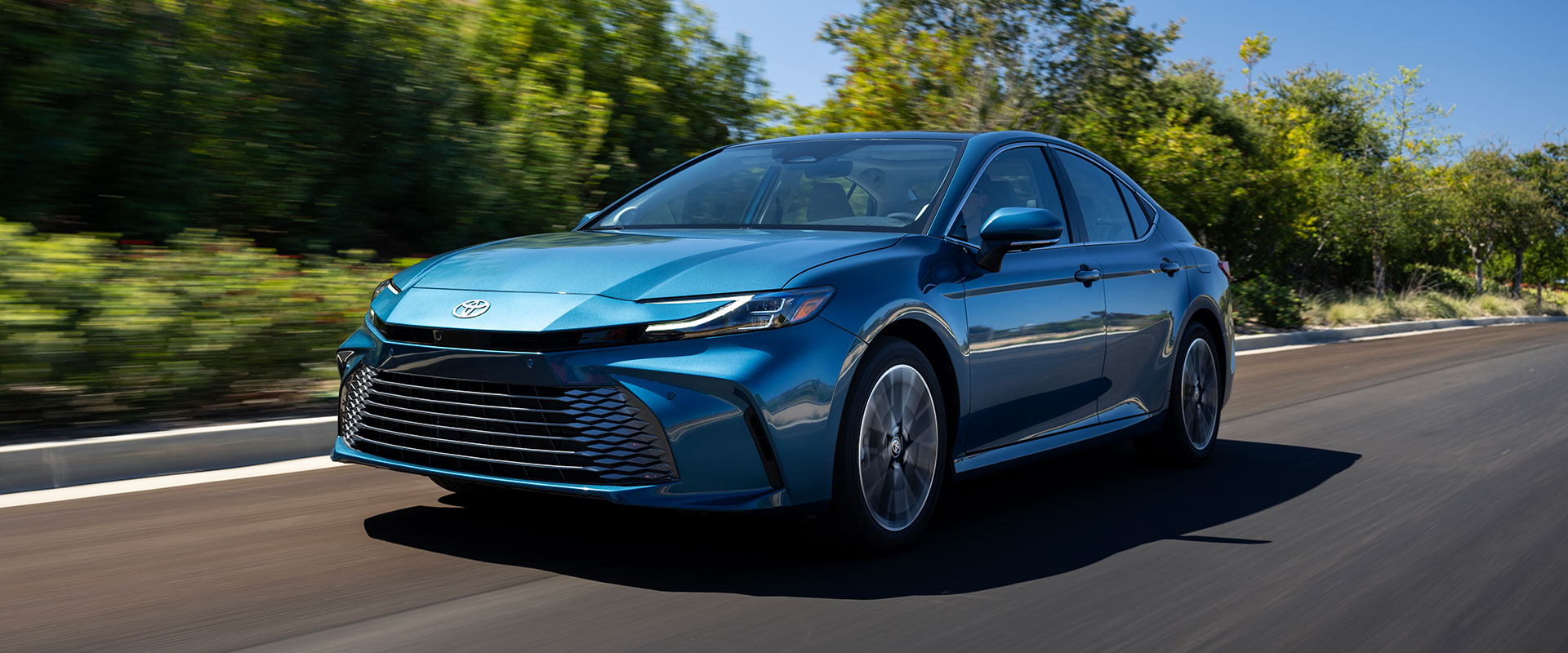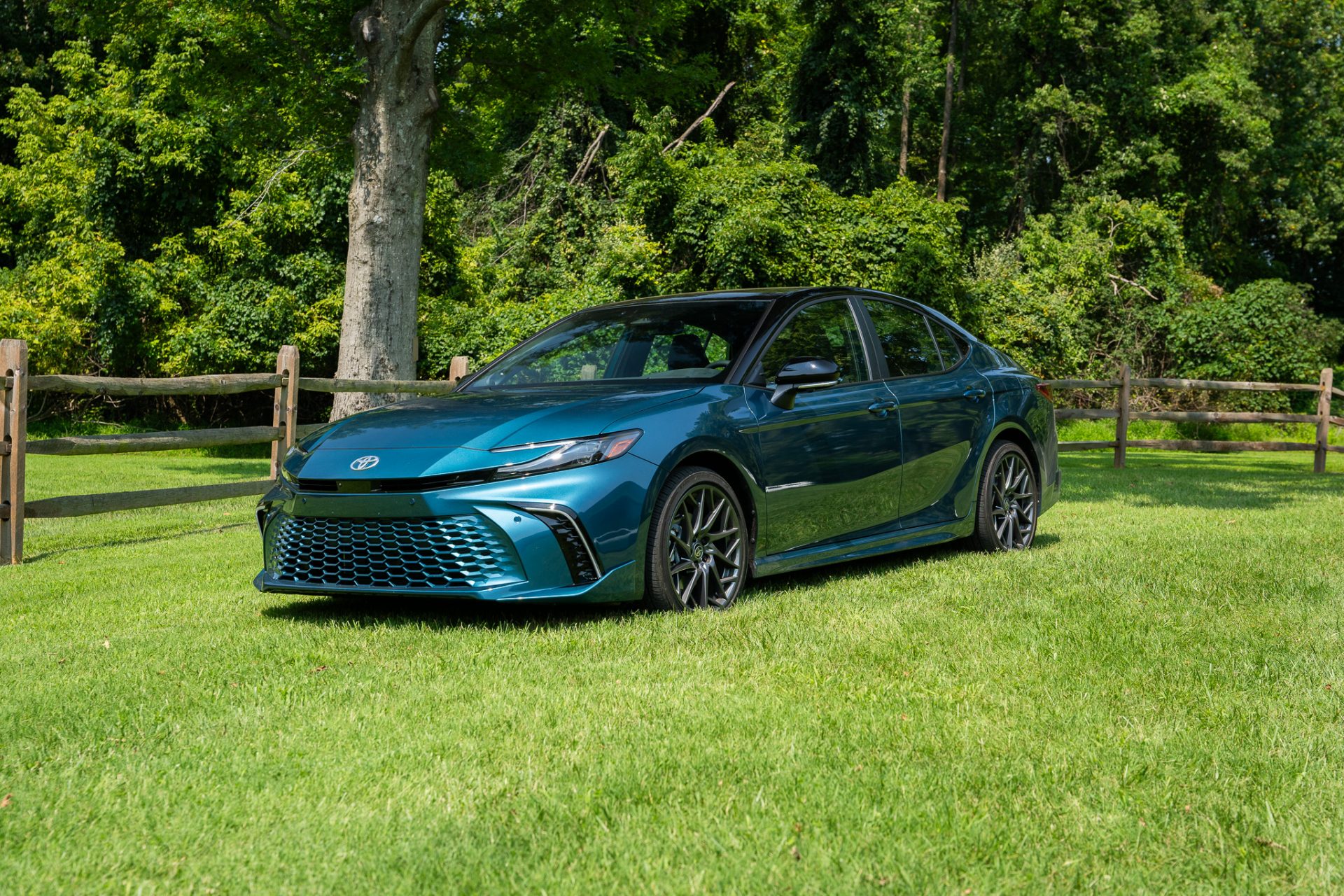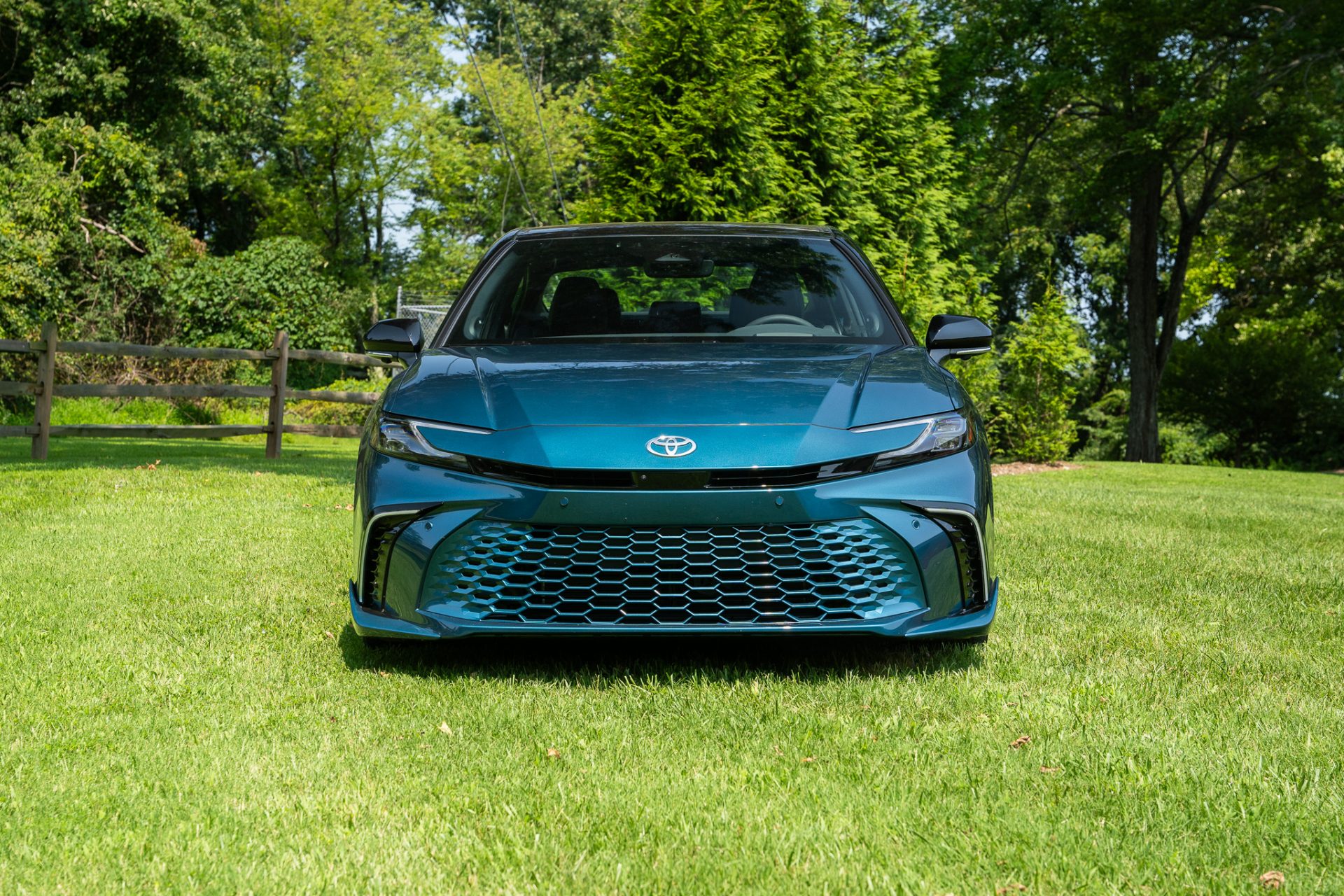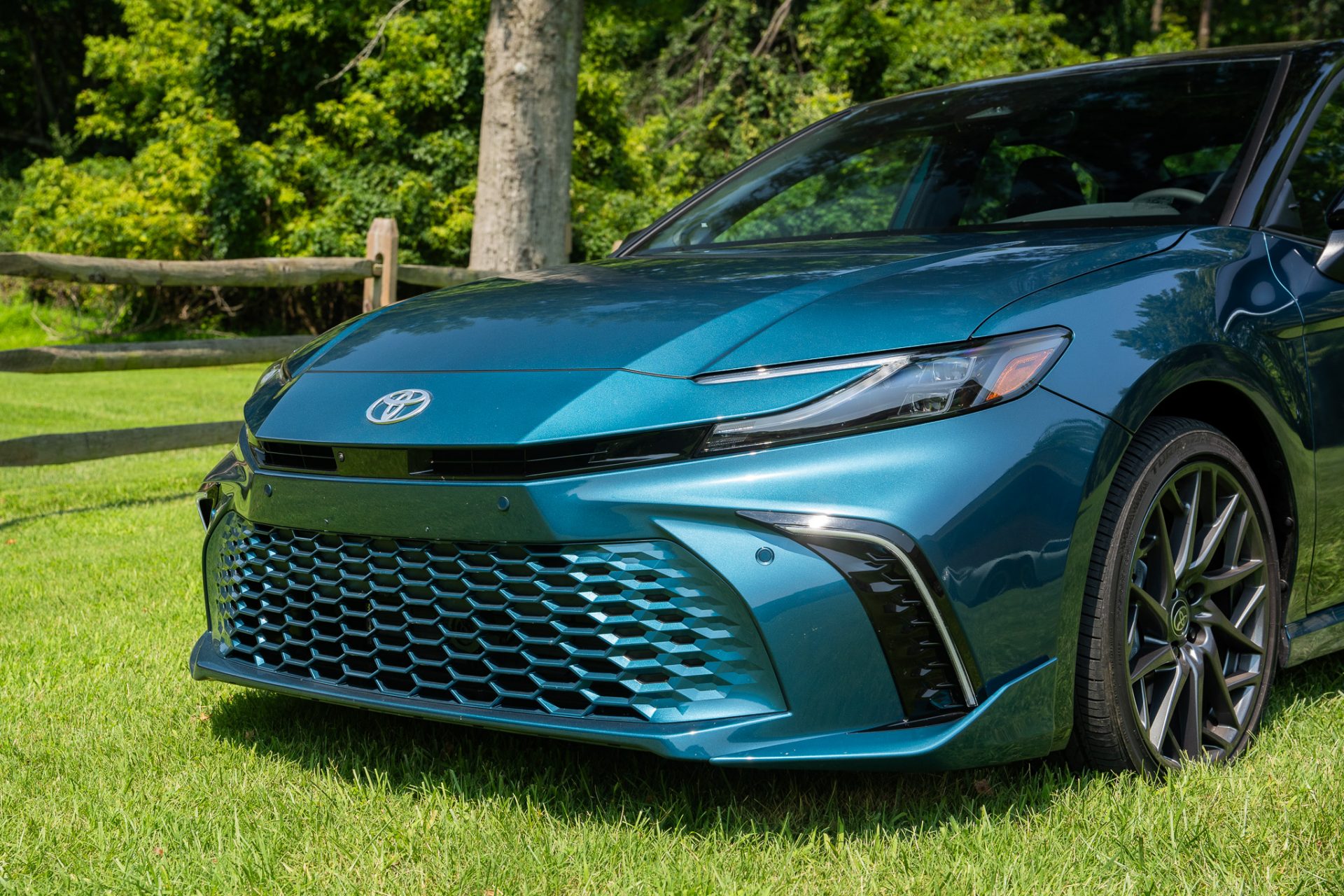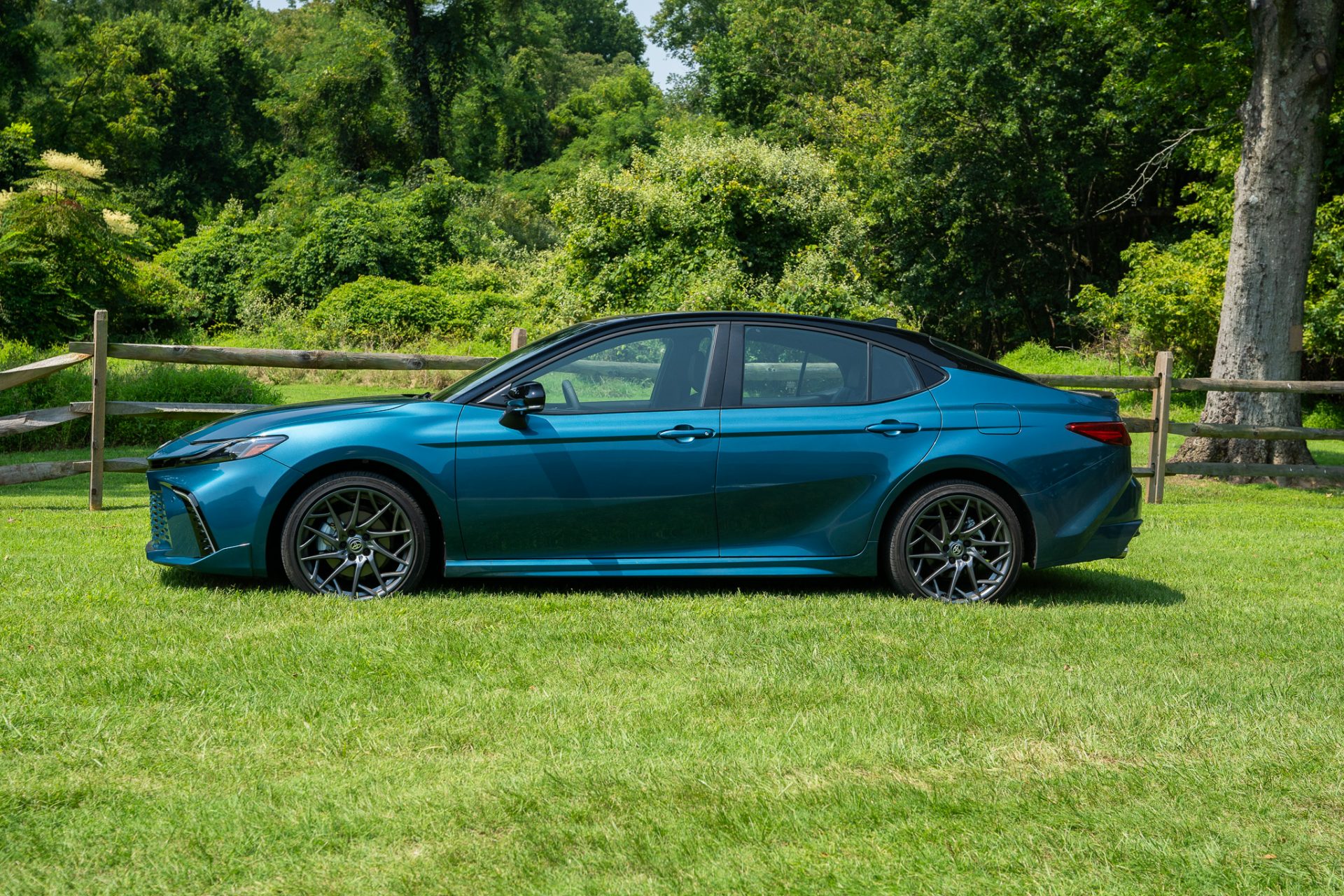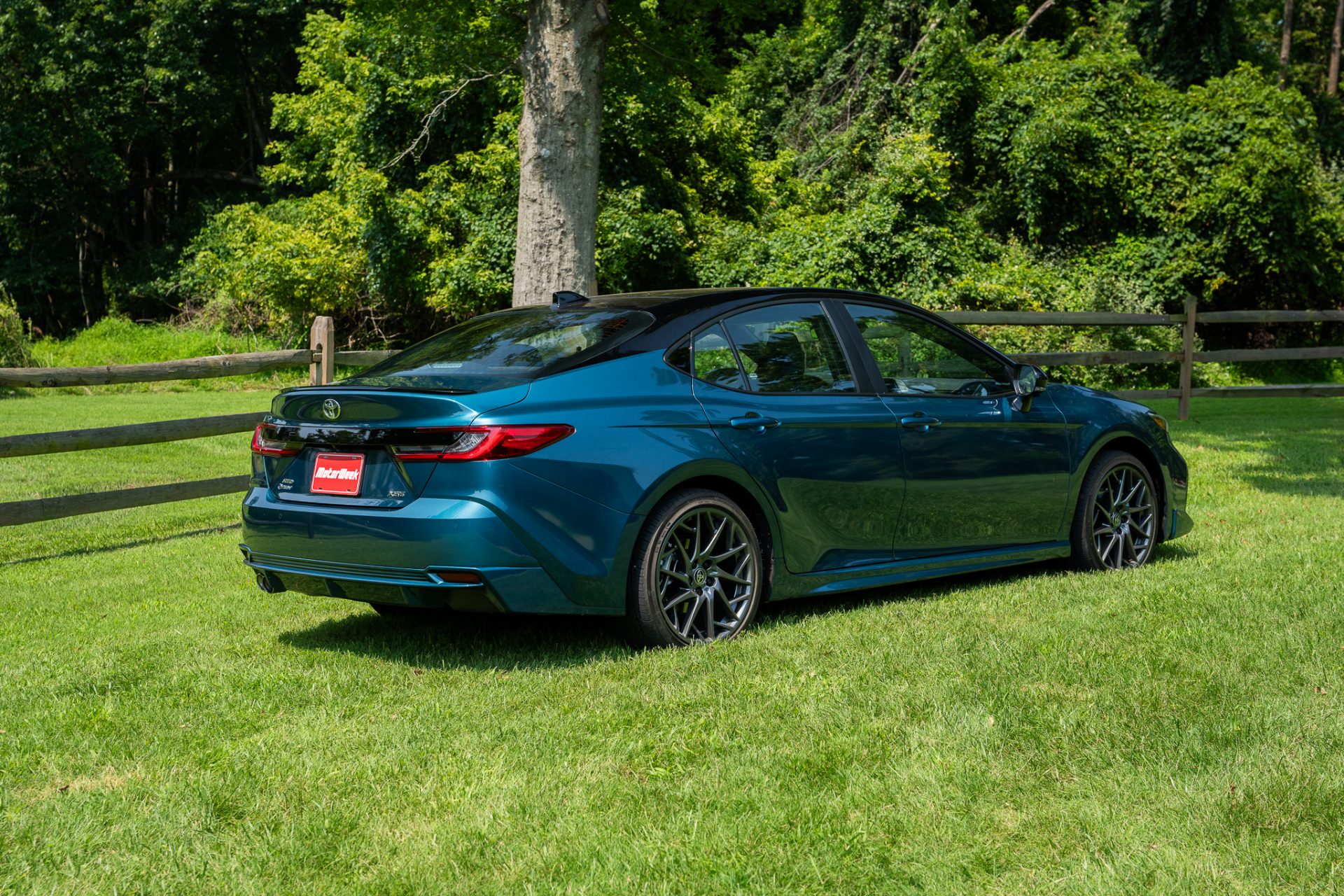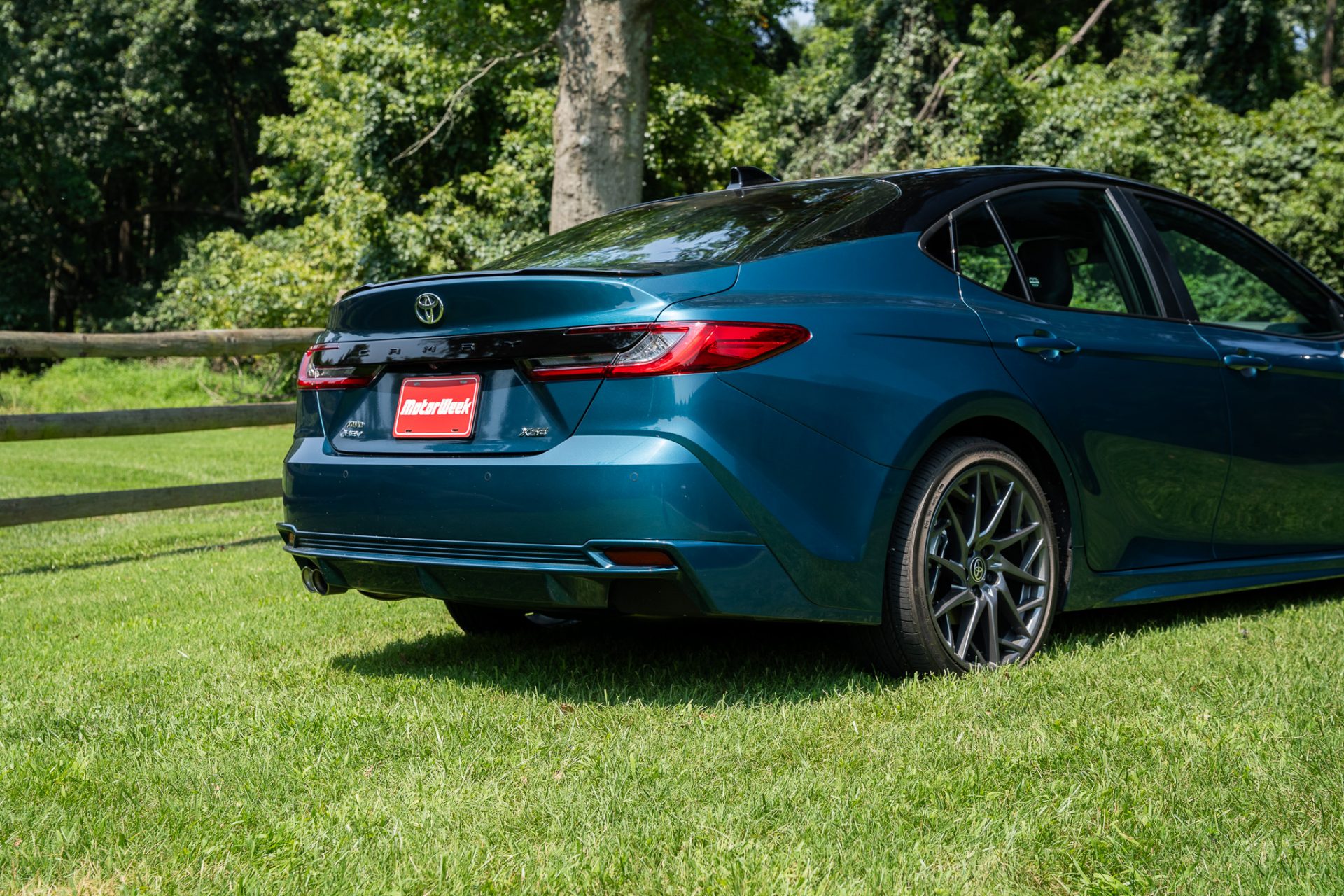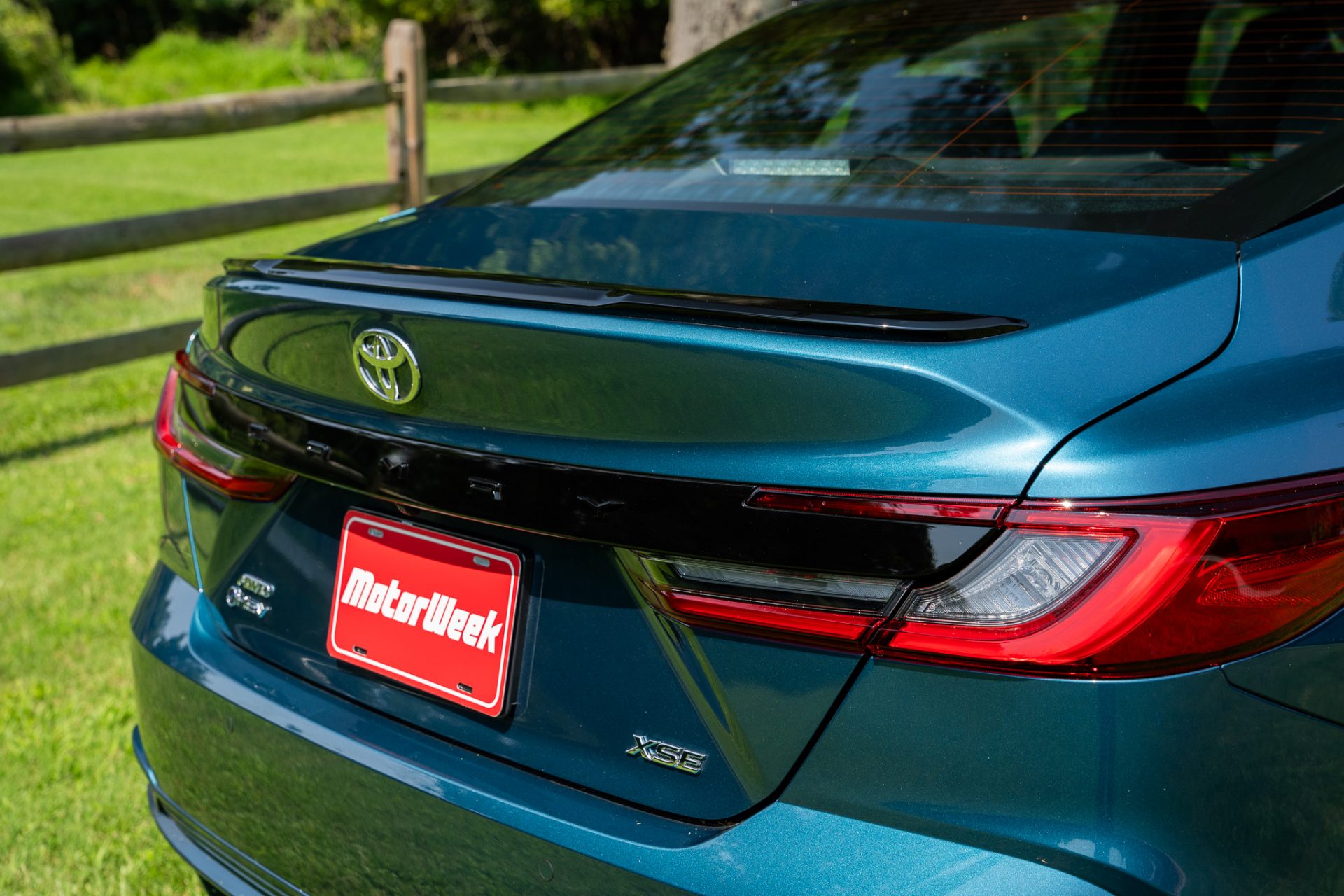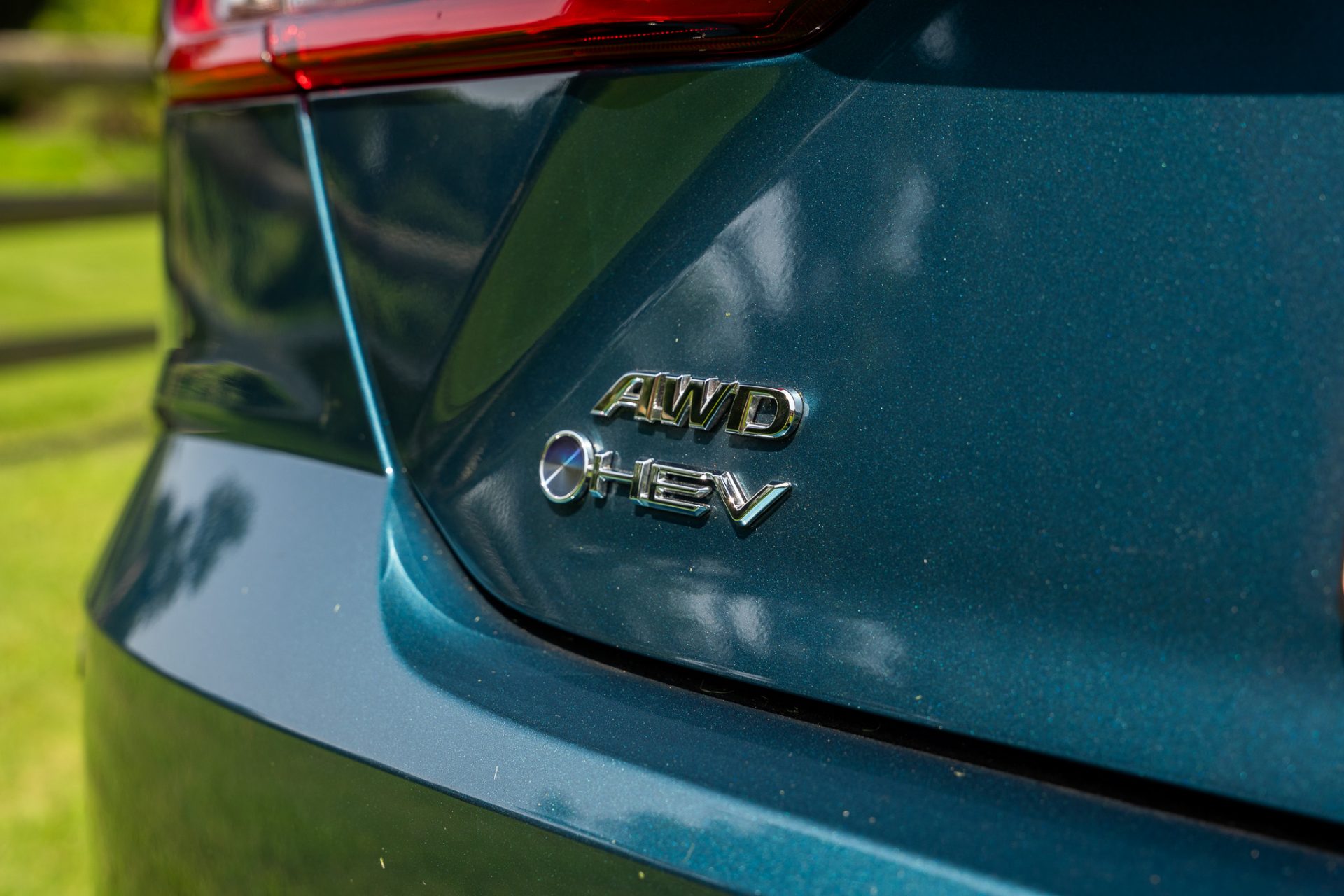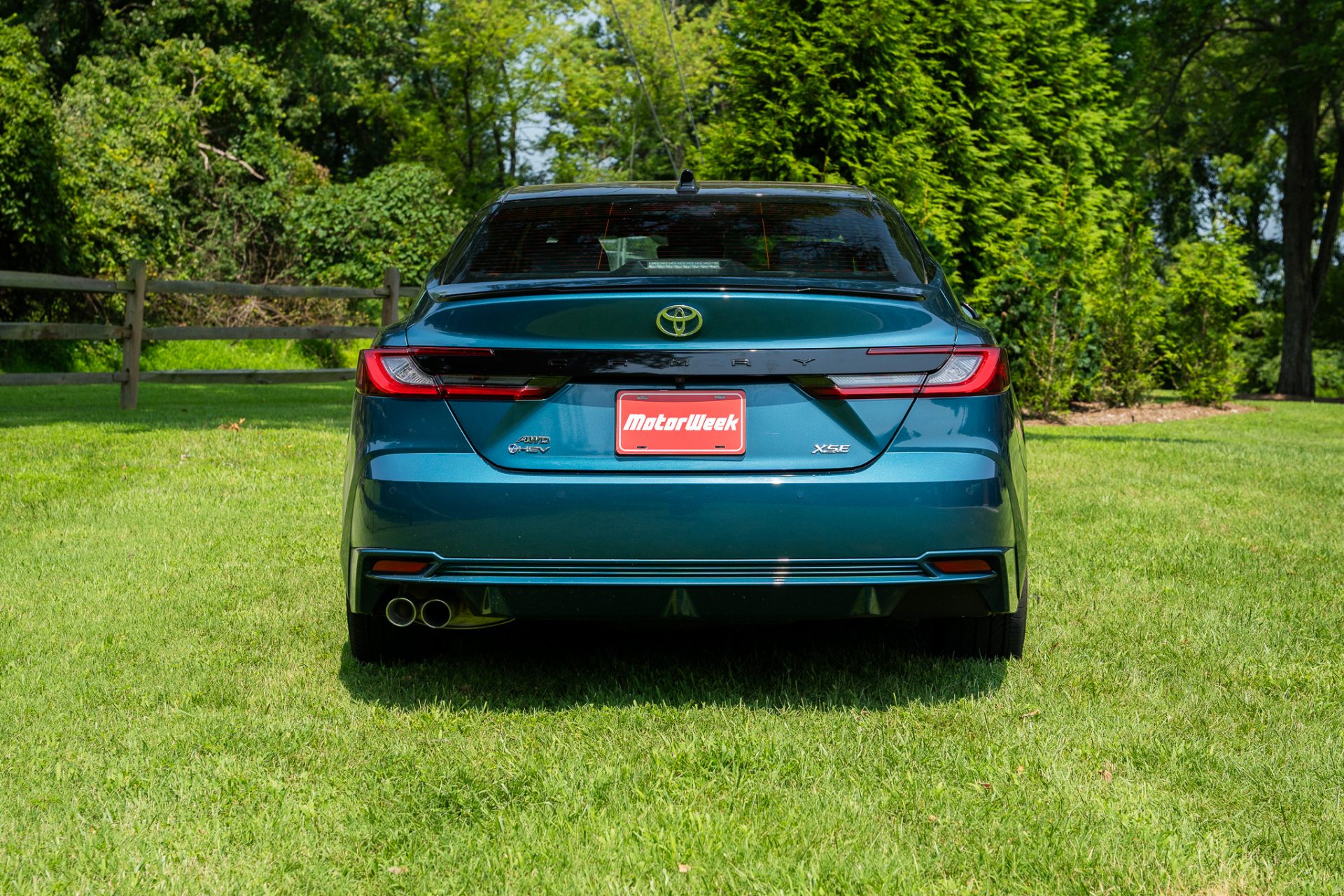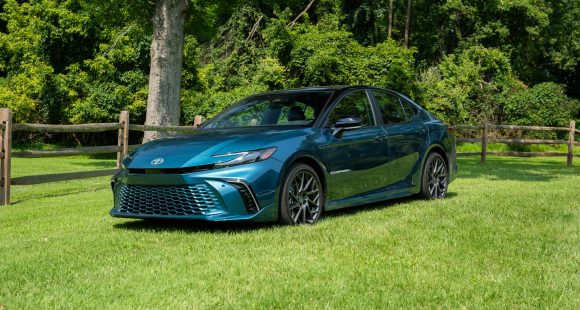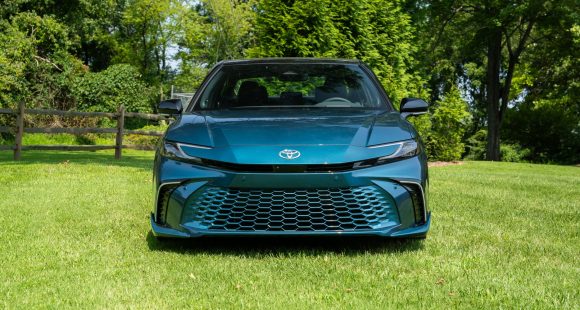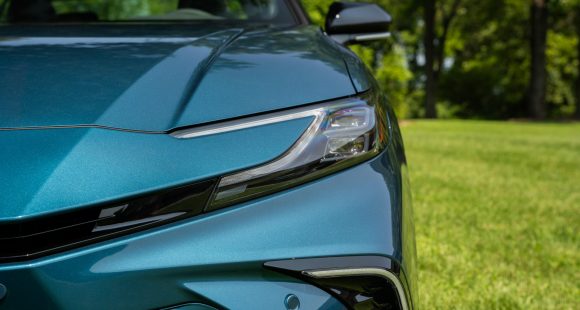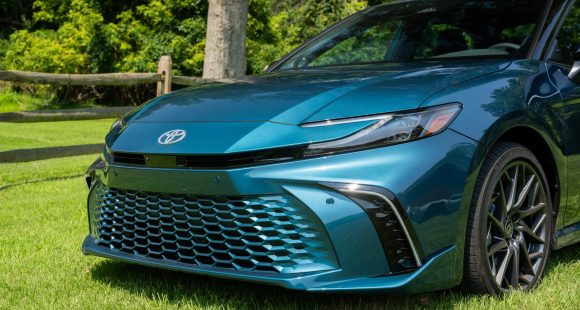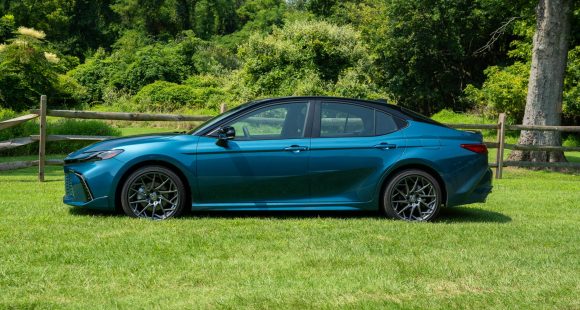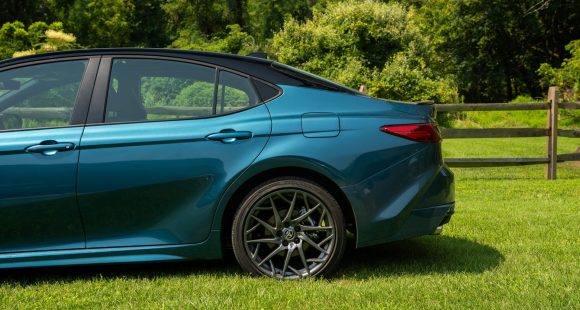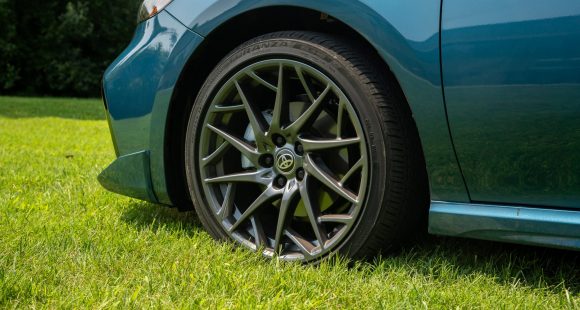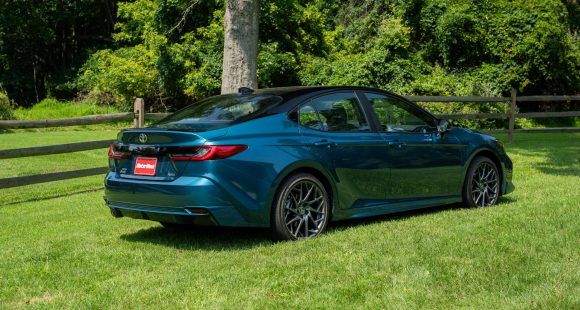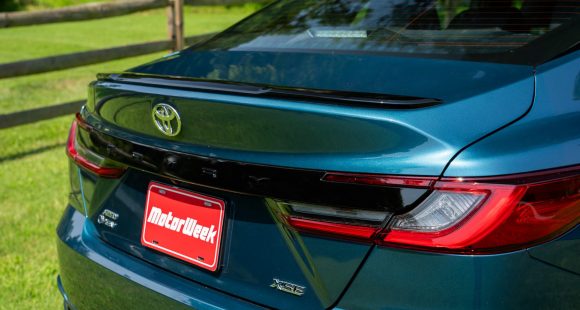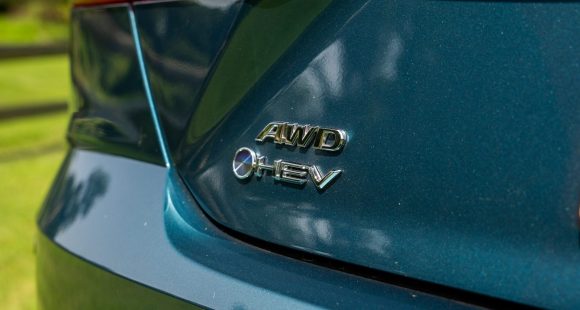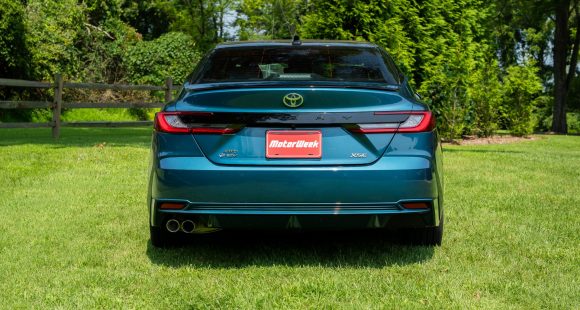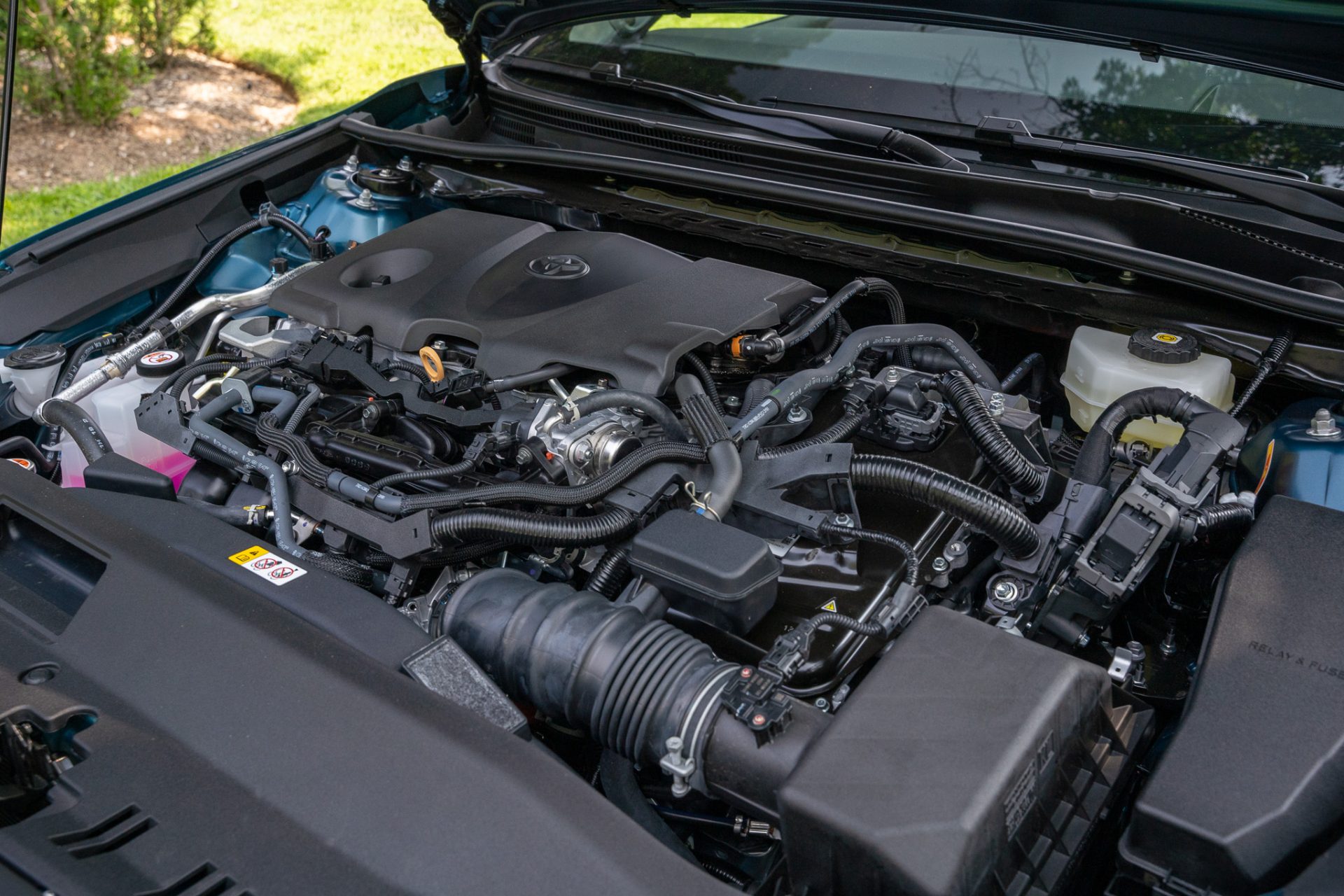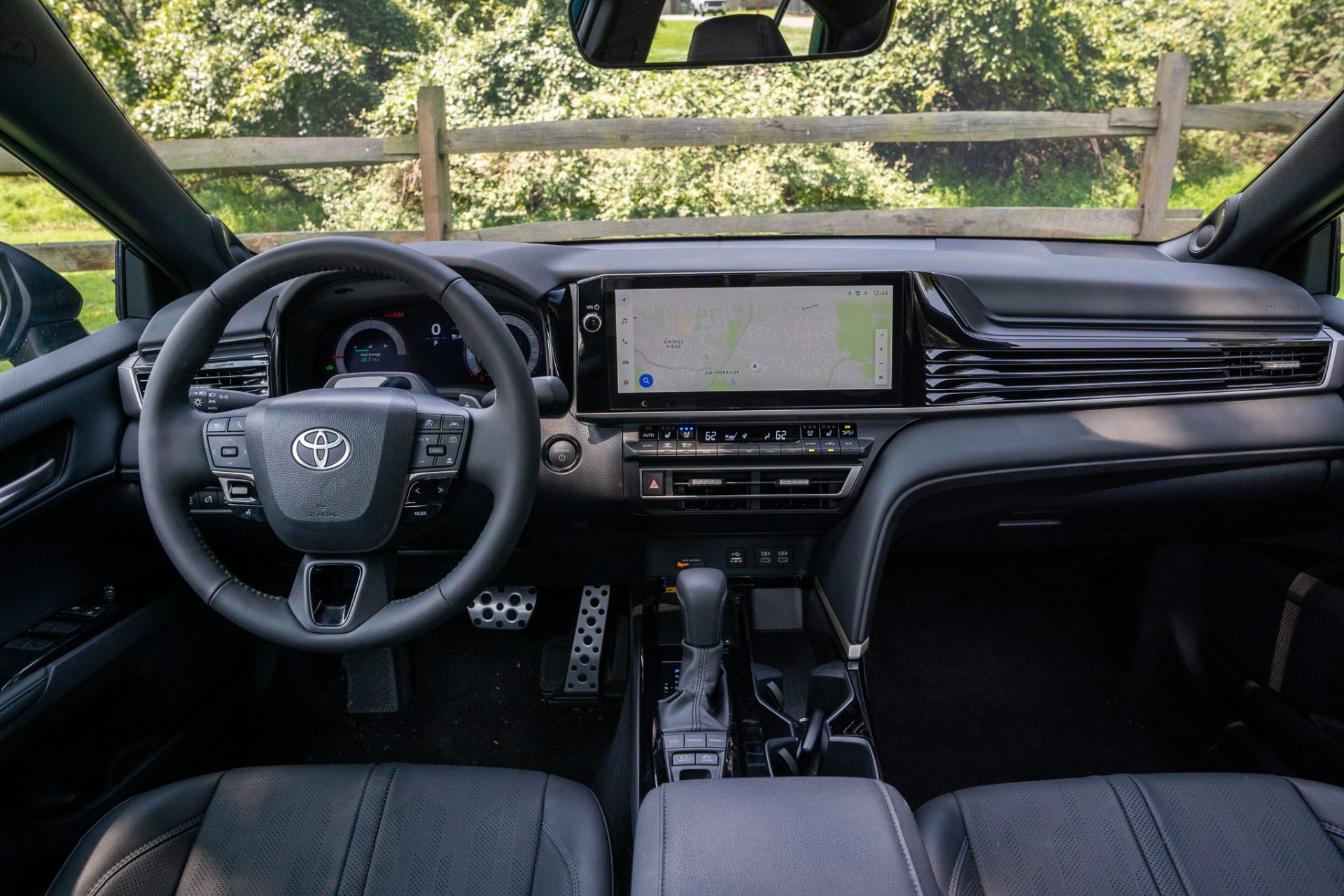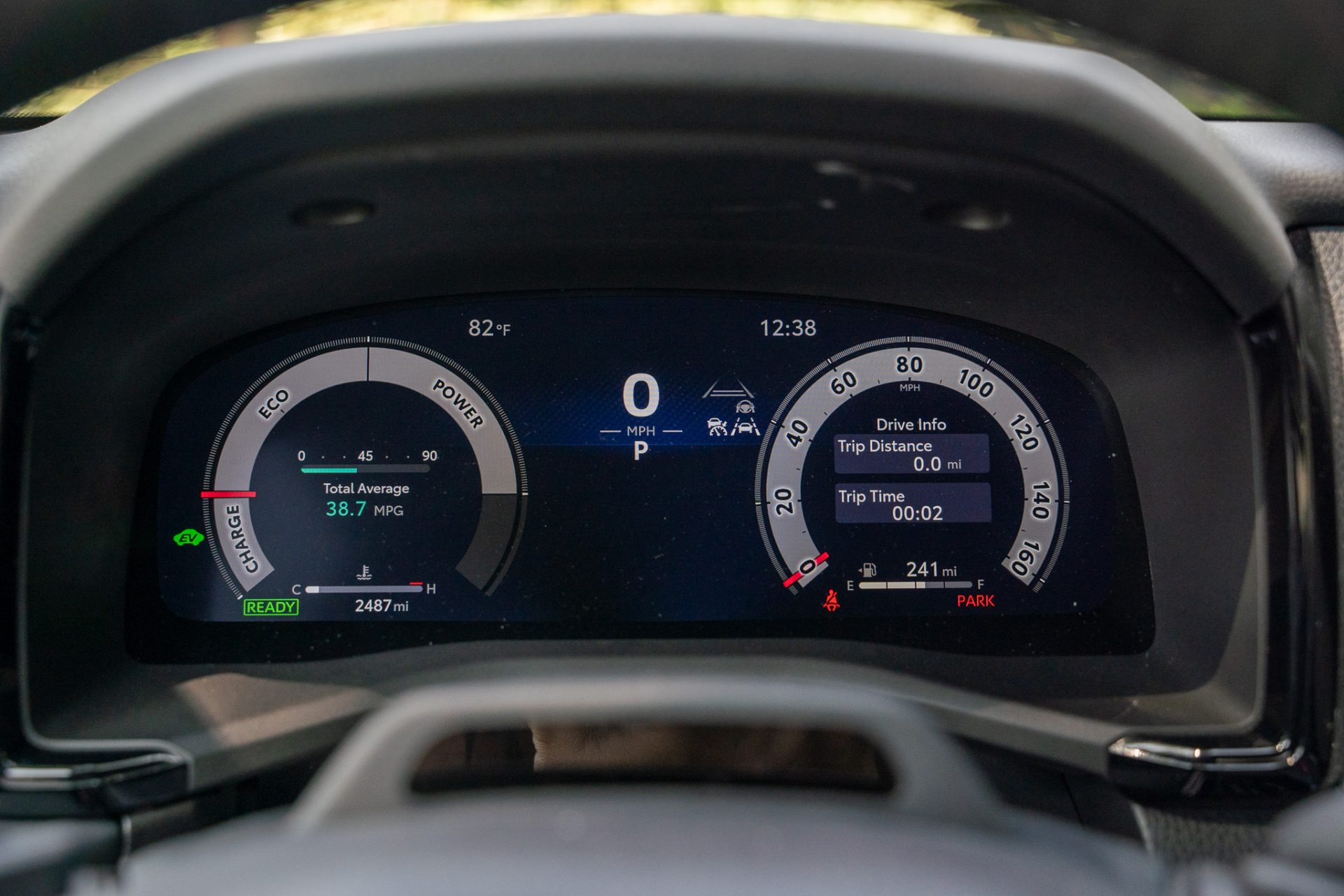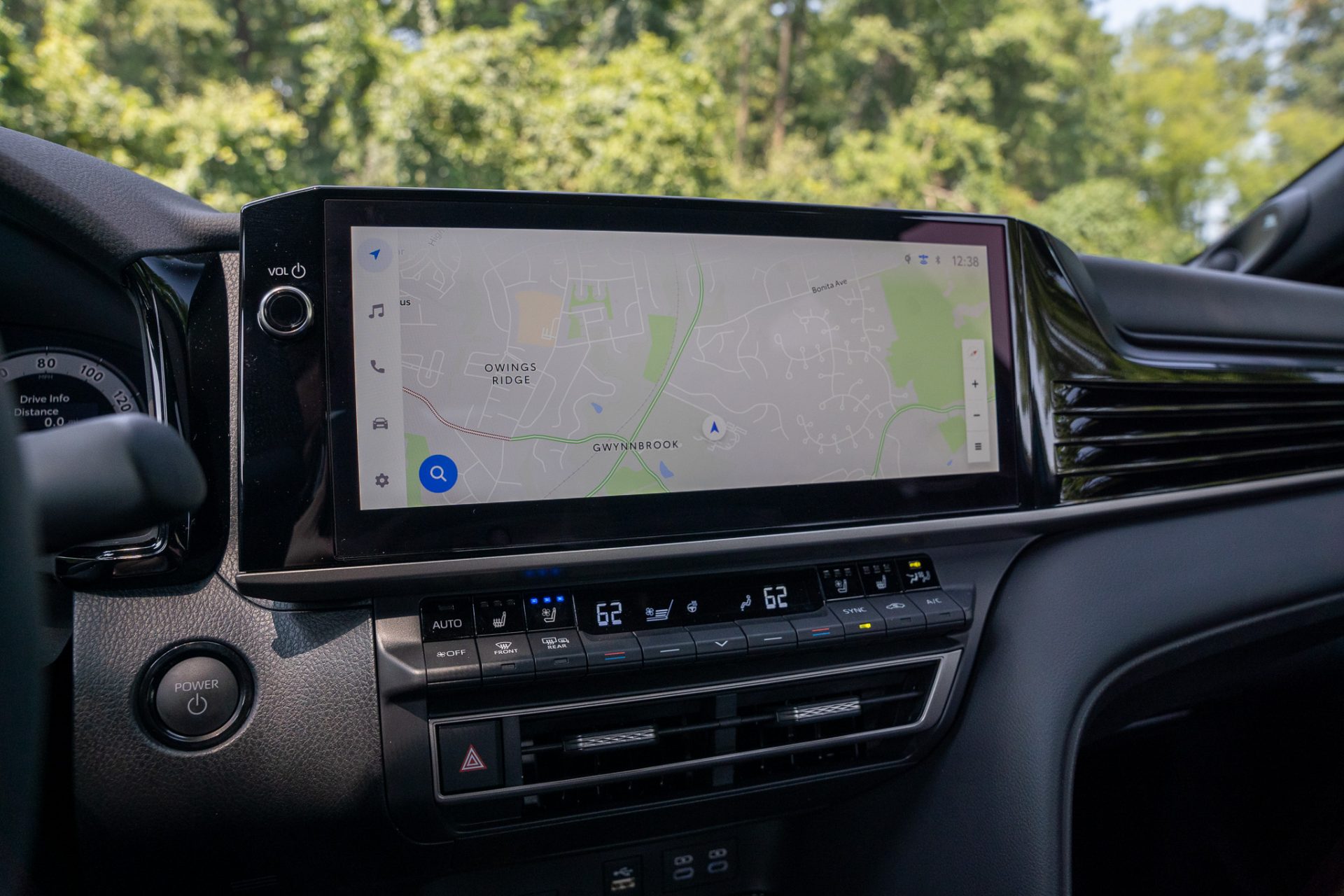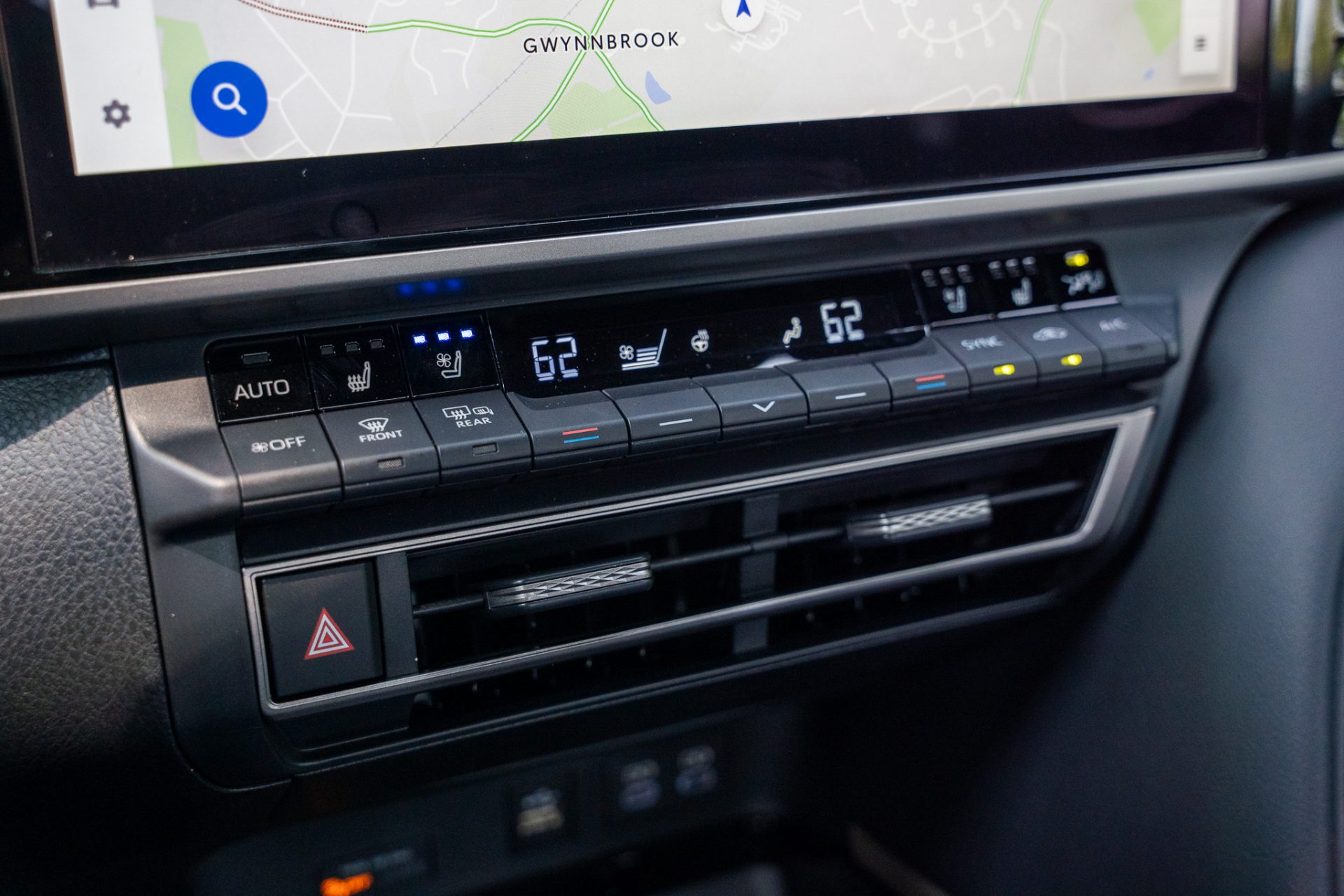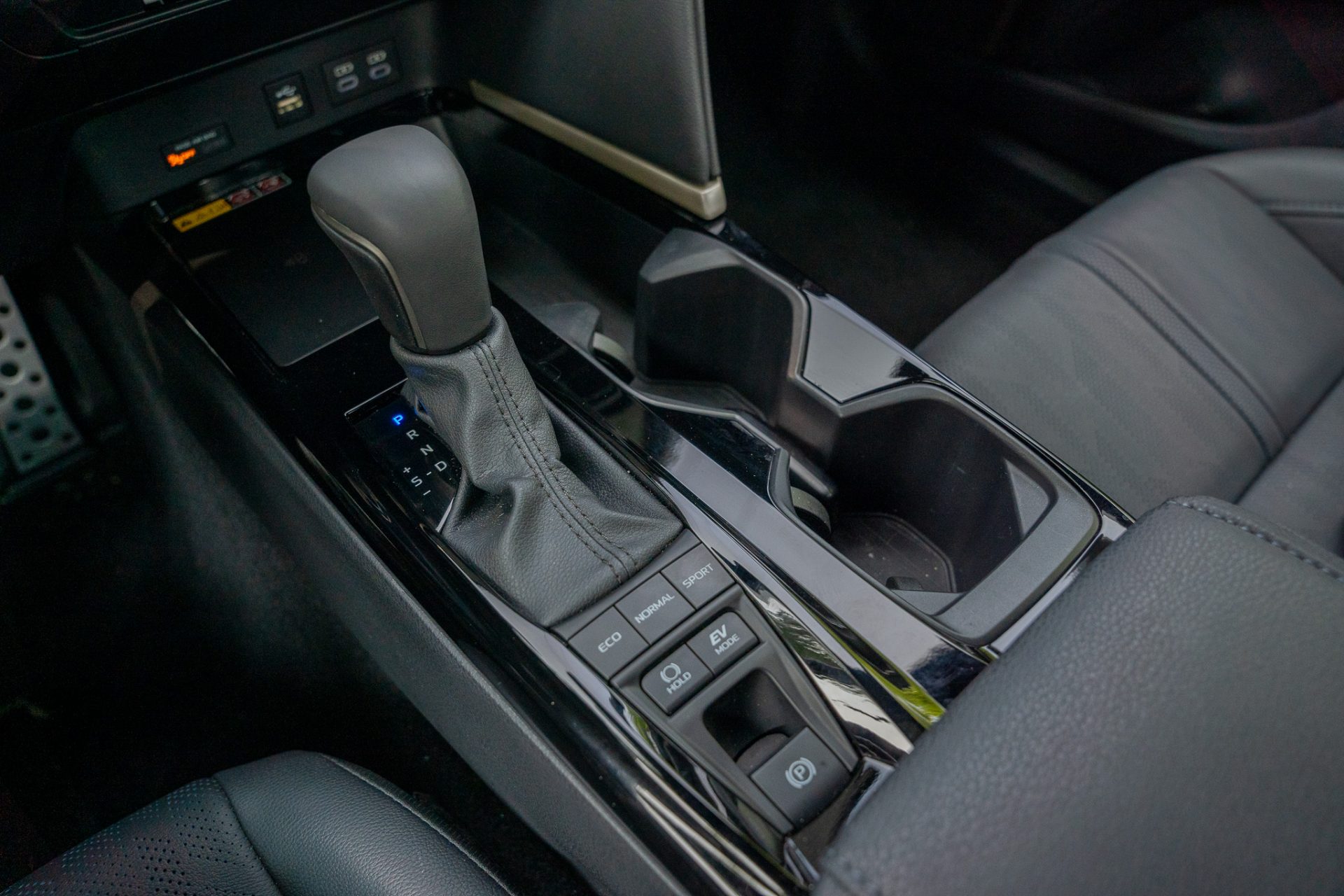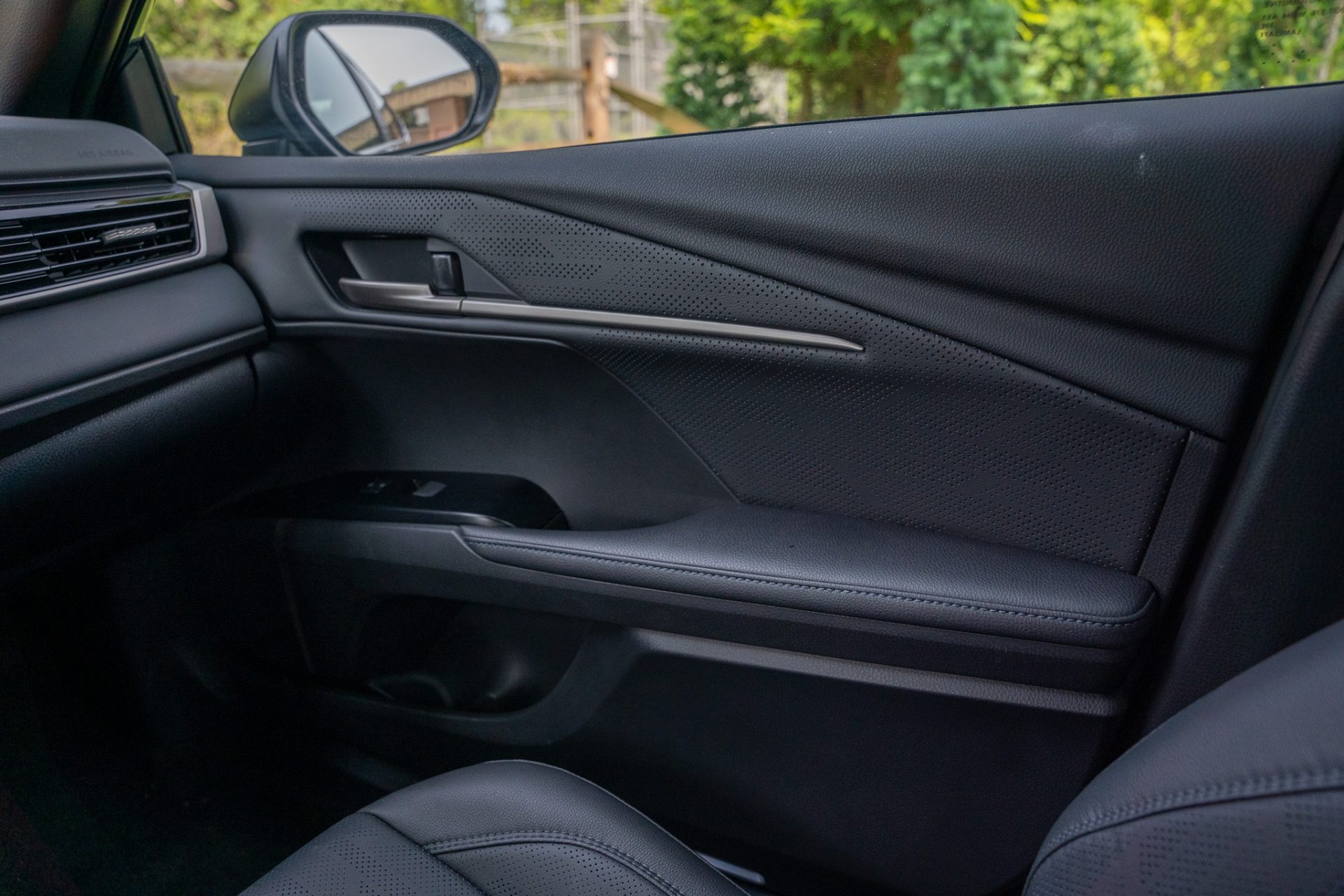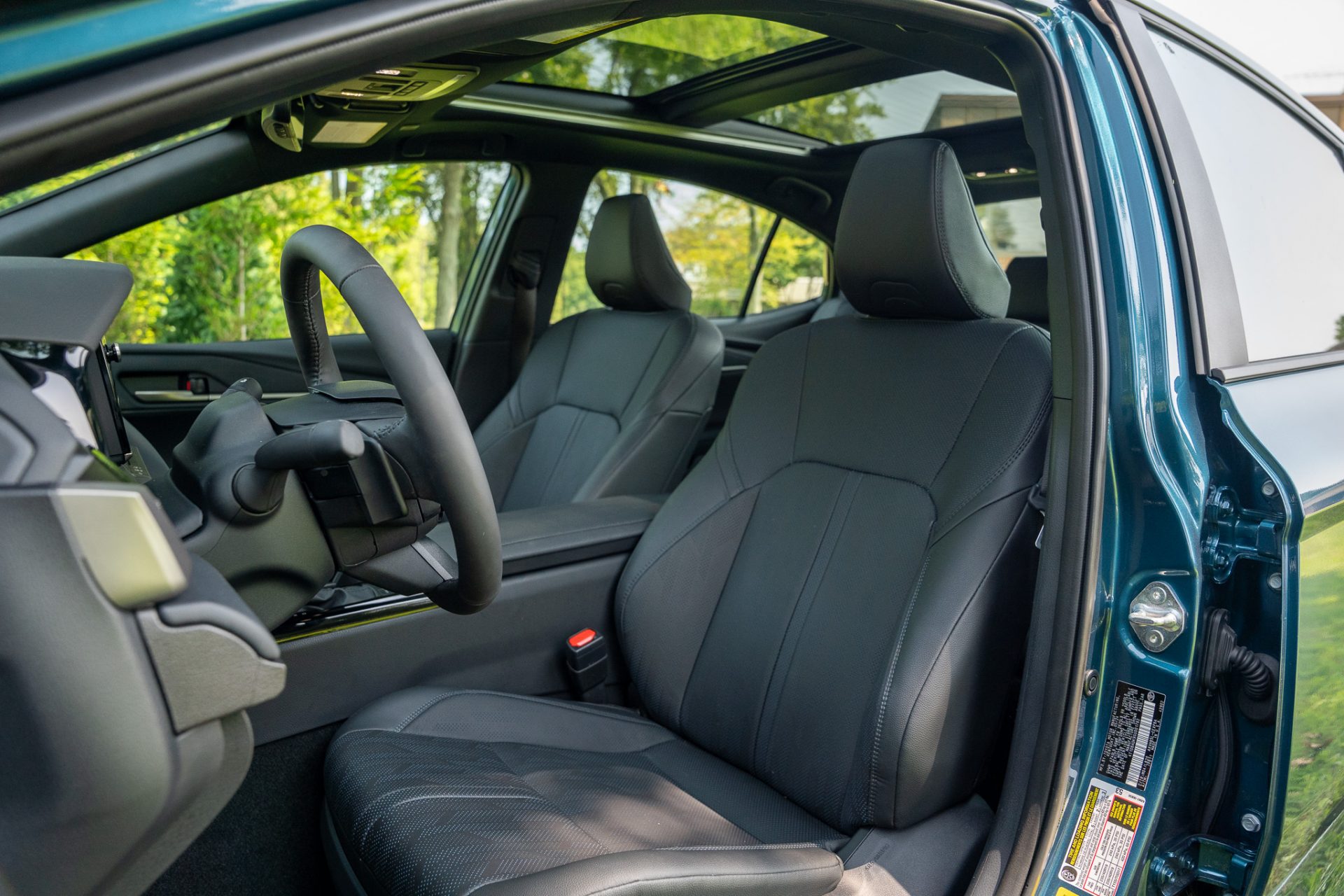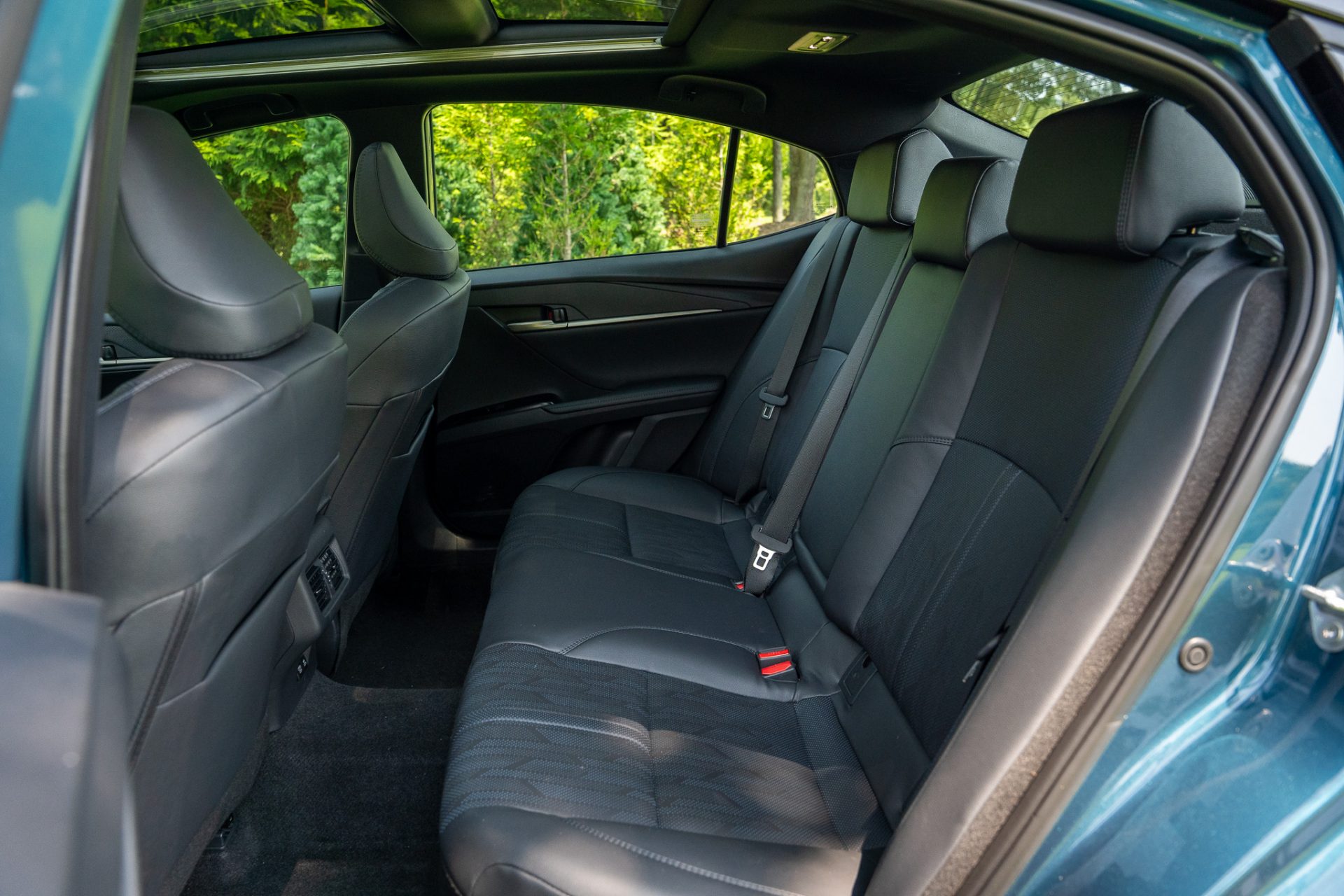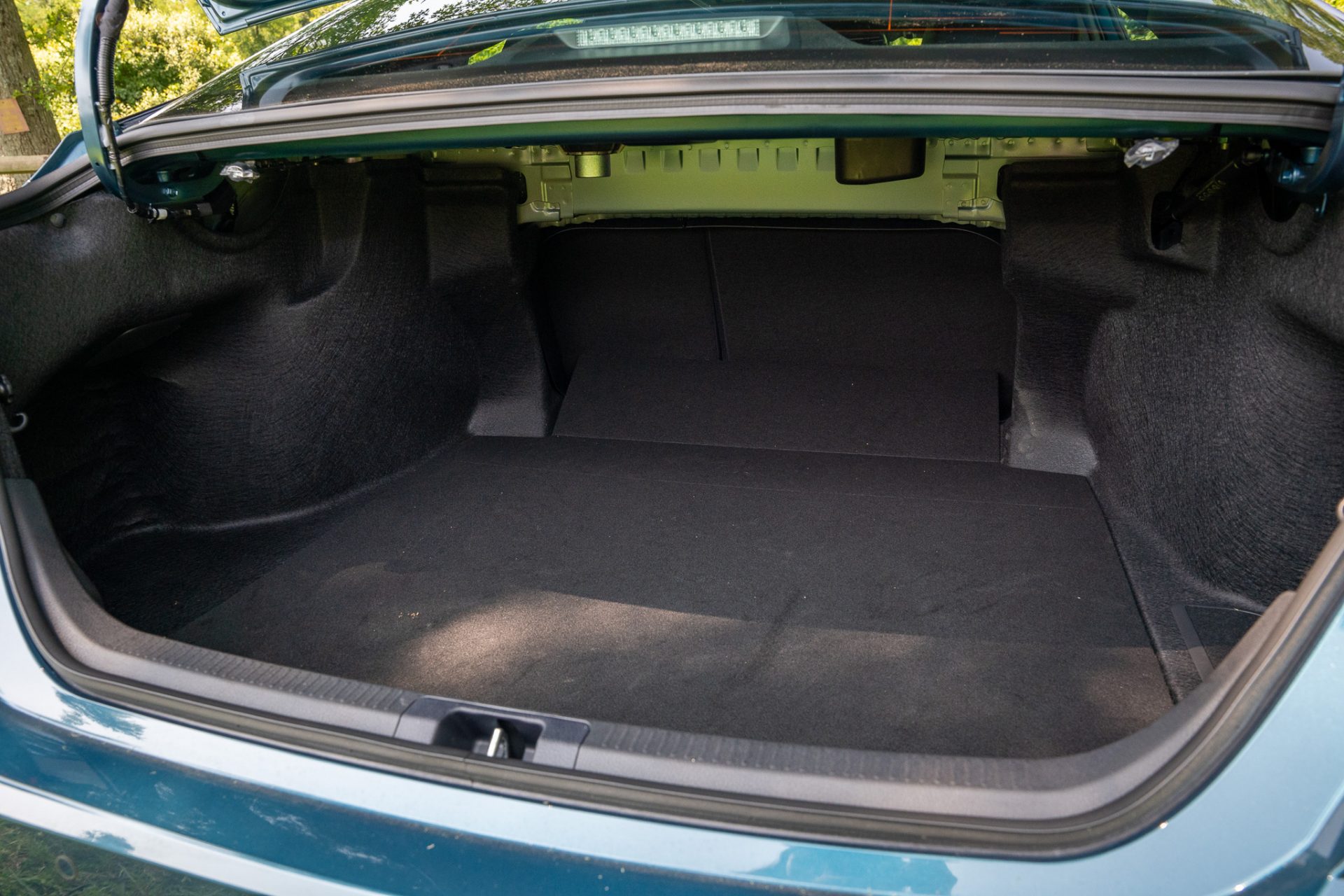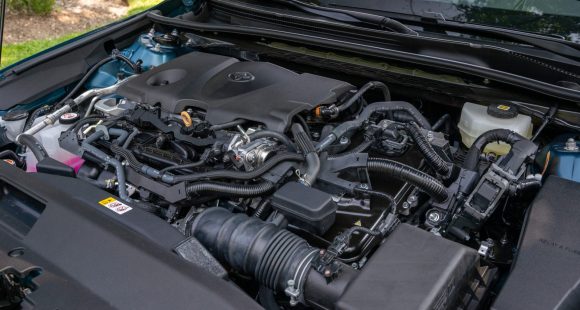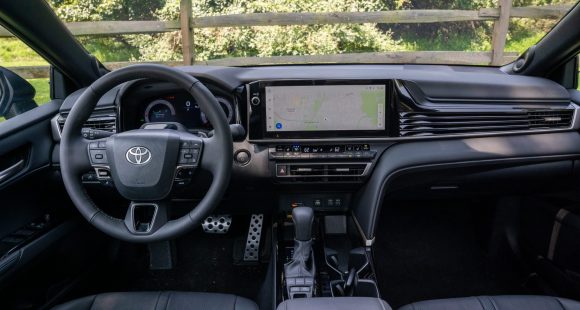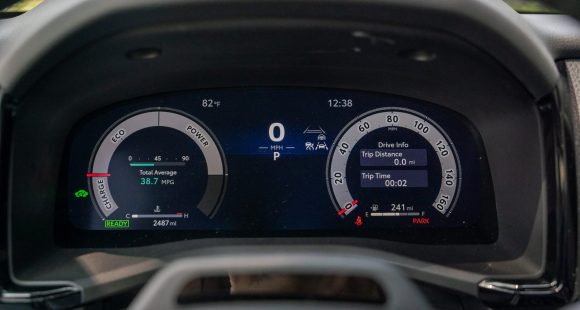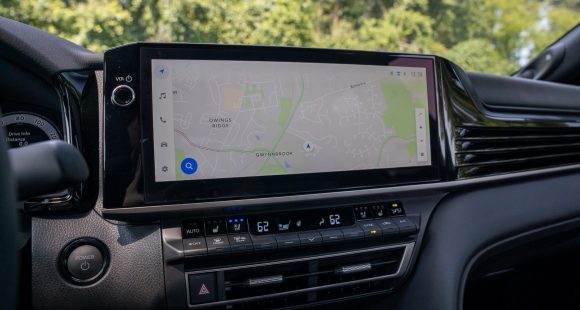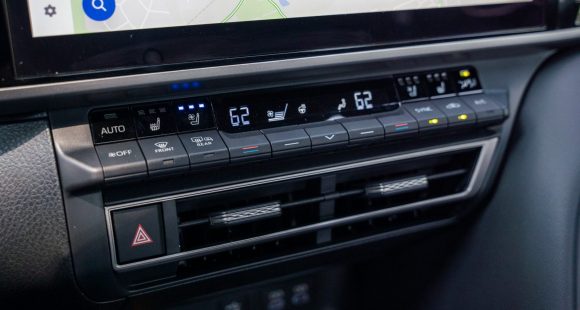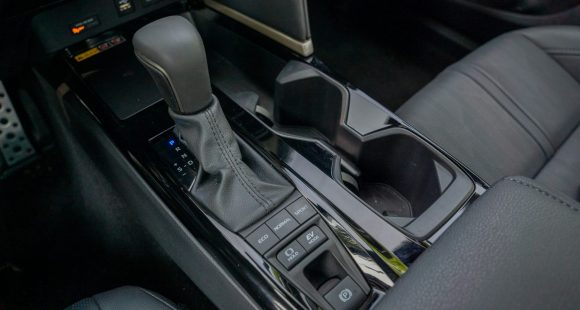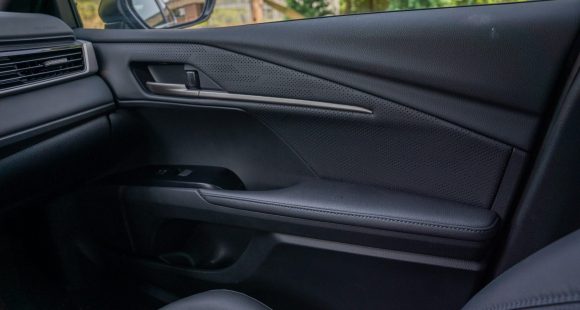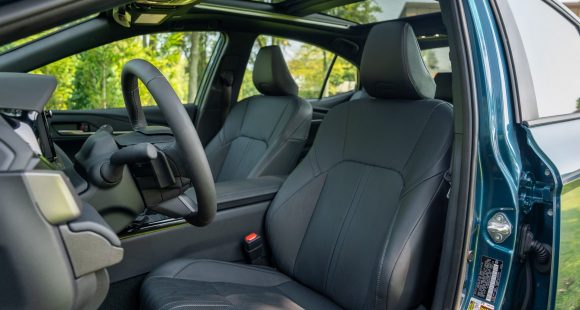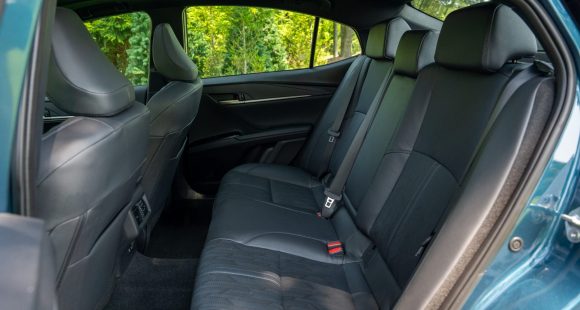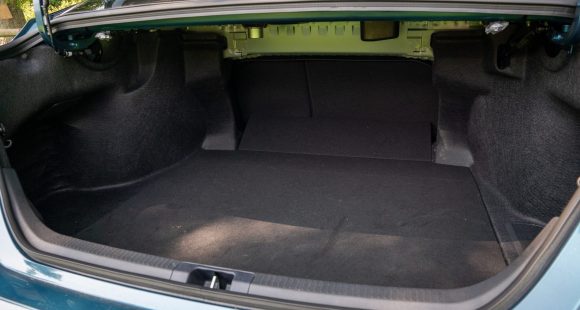2010 Cadillac SRX
With all the success Cadillac has had in transforming itself into a world-class rival to European and Asian luxury marques, one notable exception has been the SRX Crossover utility. Now the first gen 2004 SRX just never caught the attention of upper income households. Now, SRX has been totally rethought. And the result is a smaller, sharper, more standout design. So let’s see if the second time is a charm.
The new generation 2010 Cadillac SRX luxury crossover utility cuts a significantly different swath than the original. For one thing, it’s smaller, losing a little more than five inches in wheelbase, and a little less than five inches in length. That makes the new SRX much closer to its targeted rival, the Lexus RX.
But, thanks to Cadillac’s edgy styling, the new SRX comes off bolder and more muscular than the Lexus. Up front is a shield grille, flanked by Cadillac’s signature vertical headlamps with available adaptive swivel lighting.
The SRX’s profile is dynamic, accentuated by short windows, side vents, and a fast-moving upward-swept accent line.
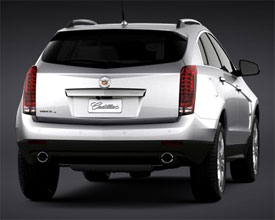 Out back, the raring-to-go look is extended by a roof spoiler and dual chrome exhaust tips.
Out back, the raring-to-go look is extended by a roof spoiler and dual chrome exhaust tips.
Wheels are pushed to the corners, in either 18-inch or 20-inch.
Something else that has changed on the new SRX is cabin capacity. From seven it has dropped to five, again the same as the Lexus RX. But what a cabin they will ride in. The SRX interior styling mixes elegance with energy, with a hand-crafted look and fit and finish that is the best ever from a domestic brand.
Gauges and controls are displayed in a logical yet sophisticated manner. The wide center stack is home to an available 3D navigation system that rises from the top of the panel.
Other goodies include an available back-up camera, a Bose 10-speaker stereo system, and an integrated hard disk drive for audio storage.
Seats are fitted with soft leather. They are plush and very supportive with standard 8-way power for the driver and optional heat.
There is ambient lighting by night, and—if you choose—sunlight by day through Cadillac’s latest panoramic sunroof.
The rear seating area is ample space for three adults, with a welcomed two extra inches of legroom over its Lexus rival. The split bench has a center armrest and it also reclines, though the control is hard to reach.
The angled rear of the SRX cuts cargo room compared to its rival. Still, 29 cubic feet seats up, and 61 cubic feet seats down is within class specs. Plus, a flexible “U-rail” adjustable tie-down system and under-floor storage make it very versatile—all reached by an adjustable height power tailgate that is standard on all but the base model.
Under the hood, more big changes for the SRX. The previous V6 and V8 powertrains have been replaced by smaller more efficient designs. Standard is a new direct-injected 3.0-liter V6 with 265 horsepower and 223 pound-feet of torque. Optional is a 2.8-liter turbocharged V6, good for 300 horses and 296 pound-feet of torque.
Each ties to a 6-speed automatic with manual mode. The turbo adds an “eco mode” which alters shift points to optimize fuel economy.
While the 3.0 has adequate response for a 4500-pound crossover, our 2.8T tester delivered a strong launch, with a fast power build. Shifts are well-spaced and solid all the way up the ladder. We find a 7.6-second 0 to 60 very respectable.
Power is relegated to the front or to all four wheels through a sophisticated Haldex transfer case that is standard with the 2.8T. For optimal traction and balance, it can transfer up to 100% of torque front to back, and up to 85% side-to-side at the rear.
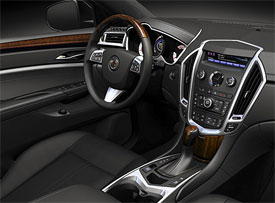 The SRX rides on an all-new chassis that is not shared with other GM crossovers. All-wheel-drive integrates with an available real-time damping system for a high degree of cornering prowess. We found the SRX to be very agile and quick-footed on both city streets and fast country sweepers, feeling more drivers’ car than crossover.
The SRX rides on an all-new chassis that is not shared with other GM crossovers. All-wheel-drive integrates with an available real-time damping system for a high degree of cornering prowess. We found the SRX to be very agile and quick-footed on both city streets and fast country sweepers, feeling more drivers’ car than crossover.
Ditto the brakes, with ABS, vented disc, and two-piston front calipers.
Government Fuel Economy Ratings for the SRX 2.8 Turbo are estimated at a modest 16 city/21 highway on premium gas. We saw only 16.8 miles per gallon in real-world driving.
SRX pricing begins over six grand less than last year, and lower than rival RX. Base is $34,155, with the 2.8T expected to sticker at just under fifty thousand.
The 2010 Cadillac SRX is a huge improvement, and now more clearly targeted towards its luxury-crossover rivals. It has the potential of doing for Cadillac crossovers what the CTS did for their sedans. But, quantum leap or not, it’s now a real charmer.
Specifications
- Engine: 2.8-Liter Turbocharged V6
- Horsepower: 300
- Torque: 296 Lb Feet
- 0-60 MPH: 7.6 Seconds
- EPA: 16 MPG City/ 21 MPG Highway
- Mixed Loop: 16.8 MPG
2025 Toyota Camry
Camry Goes All Hybrid, But It’s No Prius Sedan
Whether you call it Camry or Cam-ray, you have to call this Toyota the best-selling sedan in the U.S. for 2023. Not bad for a car in the last year of its lifecycle. That’s right, the Camry is all-new for model year 2025. So, let’s find out if this ninth-generation Camry can stay truly competitive in this world of SUVs and crossovers.
There have been many variations of the Toyota Camry over the last 40 years; some more exciting than others, but all have been incredibly comfortable, efficient, and practical. That theme carries over for the all-new 2025 Toyota Camry.
Though it feels like they purposely avoided any type of “wow” factor inside. Sure, there are the expected big screens for multimedia and gauge display, but they kept them separated, keeping the overall vibe traditional and classy rather than flashy. They’ve also retained lots of physical controls, added some unique materials, and attempted to open up the space a bit, knowing that they’re going up against EVs these days too, not just usual family sedan nameplates.
The new Camry follows Toyota protocol of basic LE series and more sport-oriented SE series; adding an X in front of either adds a bit more content. For our XSE tester that mostly means a flashier exterior that includes black trim and rear spoiler, dual exhaust tips, and 19-inch wheels, but it also gets a sport-tuned suspension.
Following the pattern of many recent Toyotas, Camry now has an all-hybrid lineup. Toyota’s newest, fifth-generation hybrid system mates to a 2.5-liter I4 engine for the first time. It works with two electric motors for a 225-horsepower output, 17 more than the outgoing Camry hybrid. And it delivers up to 51 mpg Combined. All-wheel-drive versions add an additional electric motor in back for powering the rear wheels for an increased total output of 232 horsepower; and AWD is available for all trims.
This is easily the best handling Camry we’ve driven.
Our all-wheel-drive tester did feel quite peppy on the street, with a competent suspension that soaked up bumps easily without feeling soft or floaty. At the test track, there was great grip off the line, and a substantial punch of power to get us to 60 in 6.9 seconds. There was a nice little engine growl at takeoff too, but it quickly turned into a consistent droning noise due to the electronically controlled CVT trans. There are some simulated gears you can play with, but they don’t really add much to the performance; our best quarter-mile time was 15.2 seconds at 94 mph.
This is one case where “sport-tuned suspension” seems to really mean something, as this is easily the best handling Camry we’ve driven. Minimal body roll, great road feel, and steering that was both tight and responsive. All-wheel-drive grip was great through the cones, but most people will find it much more beneficial when driving on slippery roads.
The hybrid’s regen braking is not the most natural feeling, but in panic stops the brakes clamp down quickly, causing some aggressive nosedive, but ultimately resulting in very short, 110-foot stops from 60.
As mentioned earlier, Government Fuel Economy Ratings are as high as 51 Combined, but all-wheel-drive XSEs come in at 44 City, 43 Highway, and 44 Combined, though our lead foot test loop saw just, but still noteworthy, 42.6 mpg of Regular.
Pricing starts with the base LE at $29,535; all-wheel drive is another $1,525 if you want it. XSE tops out the range at $35,735.
While the midsize four-door sedan is not the suburban staple that it once was, the Camry absolutely remains a staple of the Toyota lineup, and even kept its status as America’s best-selling car last year. So, it looks like there’s no stopping the Camry, as the more efficient 2025 Toyota Camry is better-looking, has better performance, and is a better all-around family car than ever.
Specifications
As Tested
- Engine: 2.5-liter I4
- Transmission: e-CVT
- Horsepower: 232
- EPA: 44 City | 43 Highway | 44 Combined
- 0-60 mph: 6.9 seconds
- 1/4 Mile: 15.2 seconds at 94 mph
- Braking, 60-0 (avg): 110 feet
- MW Fuel Economy: 42.6 mpg (Regular)







